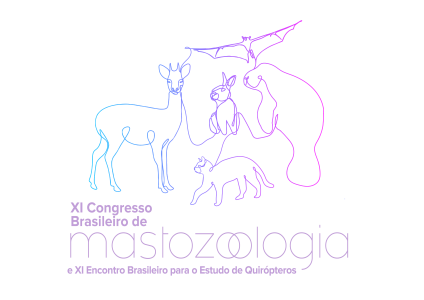Dados do Trabalho
Título:
IS CLIMATE CHANGE A GOOD DEAL? THE CASE OF COMMON SMALL MAMMALS OF THE CAATINGA
Resumo:
Climate change is expected to cause further increase in temperatures, reduced precipitation and more frequent drought events in arid and semiarid regions of the world, such as the Caatinga, the largest biome in the Northeastern Brazil. Range shift is a well know response of animals to the recent climate change, but predicting and quantifying the distribution changes in future scenarios still intrigue scientists. Here, we aim to discover which areas would be climatically suitable for four common small mammals’ species in the Caatinga in different climate change scenarios and how much potential distribution area would be gained or lost considering these changes. We performed Ecological Niche Modelling using Maxent v3.4.4 through R software v4.1.2. Occurrence data of two rodents (Wiedomys cerradensis and Calomys mattevi) and two marsupials (Didelphis albiventris and Gracilinanus agilis) were obtained from scientific collections, papers and our unpublished data, prioritizing records with vouchers. Were set 17 bioclimatic variables (BIO18 and BIO19 were excluded) of WorldClim v2.1 (2.5’ resolution) and the calibration area was set by adding a 1.5º buffer to the convex polygon obtained from each species occurrence points. Models were selected by EBPM metric (AUC > 0.75 and Omission Rate) and made a consensus of those selected. Data from CMIP6 were used for 2050 and 2070 with optimistic (SSP245) and pessimistic (SSP585) scenarios. The GCMs IPSL-CM6A-LR and MIROC6 were selected, suitability projections were generated by an ensemble of them and geographically projected on the limits of the Caatinga plus a 1º buffer. Contrasting losses and gains, all species showed increase of suitable areas in all scenarios and, therefore, a potential area gained in the Caatinga and in the transitions with the Atlantic Forest (AF) and Cerrado. In fact, the area gain should be greater in the most pessimistic and long-term scenario for all the species analyzed here. W. cerradensis must be the species with the greatest gain in climatically suitable area, even in the worst scenario (~ 109,330 km2 gain in SSP585, 2070), followed by G. agilis (~ 49,519 km2 gain in SSP585, 2070). D. albiventris, G. agilis and C. mattevi have no predicted loss in their potential distribution in any scenario. The risk of extinction is expected to be lower for mammals that already experience greater seasonality as they may have potential adaptive flexibility, but populations of these species may not be able to disperse to new suitable areas, either due to geographic barriers, their ability to disperse and move, or the speed of these climate changes. Notably, our results reinforce the potential savannization foci in the AF. It’s still a long way to go in studies, but climate change is definitely not a good deal.
Keywords: Global warming; Neotropical semiarid; Climate suitability; Rodents; Marsupials.
Financiamento:
Área
Biogeografia/Macroecologia
Autores
Anna Ludmilla Costa-Pinto, Ricardo Siqueira Bovendorp, Neander Marcel Heming, Richard Ladle
